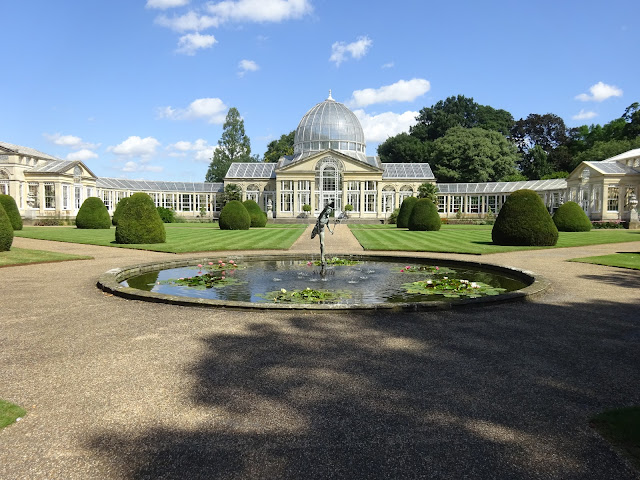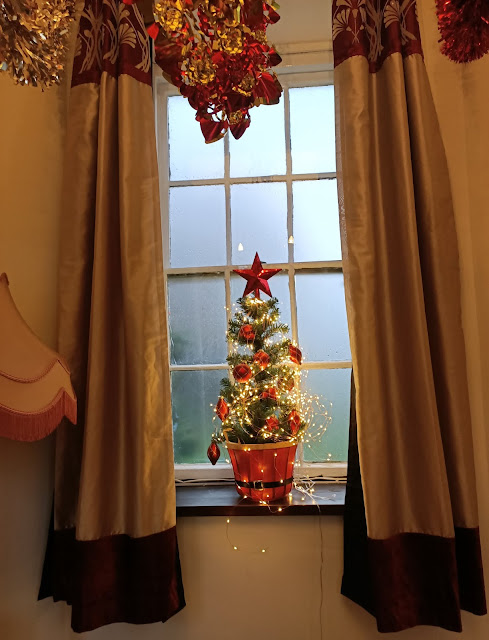The Great Conservatory, Syon Park
 |
| The Great Conservatory, Syon Gardens |
London has grown enormously over the last three hundred years, its population spreading outwards and upwards as household numbers grow, and skyscrapers reach ever higher into the air. Despite this, if you follow the River Thames to the west of the city centre, a number of grand houses and palaces remain, seemingly oblivious to the increasing urban sprawl. Pockets of historic landscape thriving alongside Greater London’s burgeoning population.
On the north of the river is one such dwelling; Syon House. It is the last ducal residence to retain its country estate in Greater London – or to put it in plain speak, Syon House still belongs to the Percy family, with the 11th Duke of Northumberland now caring for an estate that has been in his family for 400 years and counting.
My journey to Syon House and Gardens added to the incongruity of finding an historic landscape on the edge of a modern city. I took the Tube to Osterley, Middlesex, 9 miles from our Airbnb, then walked along a six-laned duel carriageway lined with semi-detached houses, through a 1950’s council estate to reach the walls of the gardens. In fact, I could’ve caught a red London bus and got off on London Road opposite the Duchess Gate, that serves as a time portal into the past.
 |
| The Duchess Gate, a portal to another era |
It was here that William Barron, who redesigned the parterre at Betley Court in 1865, honed the horticultural skills that would lead him to becoming a successful nurseryman and garden landscape designer. Having served an apprenticeship of three years at Blackadder in Berickshire, Scotland, he moved to the Royal Botanic Garden in Edinburgh where he was put in charge of the greenhouses. Even in the early 19th century, these gardens played home to a large collection of plants from around the world, and Barron’s day-to-day work would have involved the care and propagation of a wide range of specimens, increasing his horticultural knowledge and skills at maintaining artificial growing environments in chilly Edinburgh.
 |
| The Great Conservatory a St Paul's dome in glass |
All this experience came to the fore when Barron was appointed to oversee the planting of the newly built Great Conservatory (built 1820-27) at Syon House, under the Head Gardener, Richard Forrest. The new greenhouse had been designed by Charles Fowler, who also designed the covered market at Covet Garden. It was at the cutting edge of what could be achieved with cast iron and glass, and included a glass dome, giving it the appearance of a glazed St Paul’s Cathedral. The extra glazing resulted in a greenhouse with more light and heat, allowing a greater range of plants to be grown in England’s climate.
 |
| Inside one wing of the conservatory |
This was the era of the great plant collectors and explorers, and no self-respecting landowner was without examples of new finds from around the world. The Duke was no exception, and even sent his own ship on voyages to secure new specimens. The Great Conservatory was divided into different climate sections, with one for plants from Australia, fynbos plants from South Africa, and a section heated by a small stove for plants from tropical climes. The section under the great dome was planted with tropical palms and giant bamboos in beds and planters. The east wing housed African pelargoniums, a section for heaths, and finally a staging of camelias from India and China. Four miles of carefully managed hot water piping kept the plants in optimal growing conditions.
 |
| Charles Fowler's classical influenced design |
The gardeners at Syon clearly enjoyed a good reputation for propagation skills, and in 1831, grape vines grown there were sent out to Australia. Bear in mind, these young plants travelled, wrapped in hessian and sent by sailing boat, taking many months to complete their treacherous voyage. These young vines were to be the starting point of the Australian wine industry we know today.
 |
| Grapes are still grown in the conservatory. The descendants of those shipped off to Australia, perhaps? |
 |
| Syon House, as seen from Syon View walk, across the River Thames from Kew Gardens. Barron would recognise this view. |
What strikes me is that if I could transport William Barron to either Syon Gardens, or Betley Court Gardens (to name just two of his many landscapes), he could recognise and put his hands on a landscape that he had a part in shaping, even now, over a century and a half later. There is something about that fact that is truly awe-inspiring to me.
Ladybird Su
 |
| Back to reality - a red London bus passes the garden entrance onto London Road. |



Comments
Post a Comment